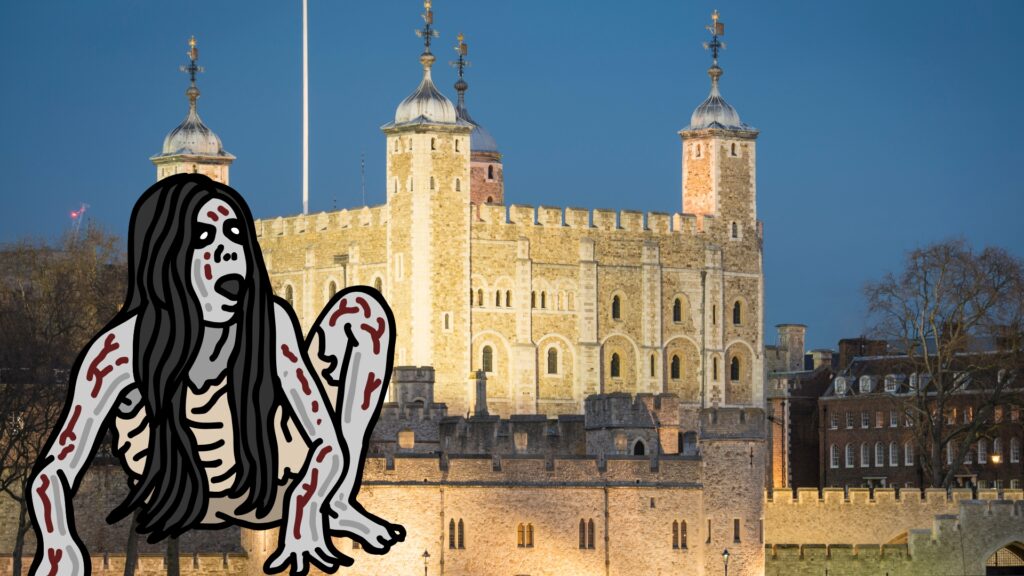In the heart of modern-day London—surrounded by steel skyscrapers and the hum of city life—stands a relic of England’s raw, brutal, and captivating past: The Tower of London. At first glance, it might seem like just an old castle, a pretty backdrop for tourist photos. But look closer, and you’ll feel it. A chill. A whisper. A heavy stillness that settles on your shoulders like an invisible cloak.
Because this isn’t just a building—it’s a witness. To executions. To betrayals. To stolen crowns, secret love affairs, royal paranoia, and unspeakable horrors. This tower doesn’t just remember history. It holds onto it, like scars carved into stone.
Let’s unlock its gates and walk through the centuries, where each brick has soaked up tears, blood, ambition, and silence.
The Beginning: Born Out of Conquest
The story begins in 1066, when William the Conqueror crossed the English Channel and seized the throne. But claiming power wasn’t enough—he needed to keep it. So, to show Londoners who was boss, he built a fortress. Not just any fortress, but one designed to intimidate.
Thus, the White Tower rose, cold and defiant against the London skyline. It was more than a military stronghold. It was a message. And it worked.
Over the next 900 years, this one tower would grow into a massive compound of gates, towers, prisons, and secrets—what we now call the Tower of London.
Royal Drama: Crowns, Lovers, and Tragedy
Forget fairy tales. The real royal stories happened inside these walls—and they weren’t pretty.
Anne Boleyn walked in as queen and left without her head. Once beloved by Henry VIII, she was arrested on trumped-up charges of adultery and treason. She died on Tower Green in 1536, whispering prayers under her breath as the French executioner swung his sword. Some say you can still see her ghost gliding silently near the chapel, her head tucked under her arm.
Then there was Lady Jane Grey, England’s “Nine-Day Queen.” She didn’t even want the crown, but politics pulled her in—and the Tower became her prison. She was just 16 when she was executed. A teenage girl caught in a grown-up game of power.
And what about the Princes in the Tower? Two young boys—Edward V and his brother Richard—disappeared within these walls in 1483. They were supposed to be protected here. Instead, they vanished without a trace. Centuries later, their tiny bones were discovered beneath a staircase. Who killed them? Their uncle, perhaps? No one knows for sure. That mystery still lingers like fog on the Thames.
The Tower as a Prison: A Place to Be Forgotten
People feared being sent to the Tower. It meant one of two things: torture or death. Or both.
Inside, the torture chambers were tools of persuasion—and pain. The rack, the Scavenger’s Daughter, and the manacles all had one purpose: to break the body so the mind would confess.
Guy Fawkes, the man behind the Gunpowder Plot to blow up Parliament in 1605, was tortured here. He entered defiant. He left shattered. His signature on his confession is barely legible—a scribbled scream.
But the Tower didn’t just punish rebels. It punished people who spoke out, married the wrong person, or simply got caught in the wrong moment of history.
Even Queen Elizabeth I—before she wore the crown—was locked in the Tower by her half-sister Mary. She survived, but the memory of those stone walls haunted her forever.
Jewels Behind Bars: The Crown Jewels and the Illusion of Glory
Today, millions flock to the Tower to see the Crown Jewels: glittering symbols of monarchy, power, and pageantry. The Imperial State Crown. The Sovereign’s Orb. The sceptres and swords that gleam under glass.
But here’s the irony: those jewels live in the same fortress that devoured so many in pursuit of power. For every sparkling gem, there’s a bloodstain hidden deep in the Tower’s soul.
They are beautiful. But they are reminders, too—of what people have done to wear them.
The Beefeaters: More Than Just a Costume
The Tower’s guards—the famous Yeoman Warders, or “Beefeaters”—aren’t just decorative figures for your selfies. They are ex-military, hand-picked to guard the Tower and tell its stories. Living within its walls, they keep the history alive—not through dusty textbooks, but with chilling tales, laughter, reverence, and sometimes, sorrow.
Ask them about the haunted rooms. They might smile politely—or they might tell you something that keeps you awake at night.
Legends and Ravens: The Superstitions that Still Live On
One of the most haunting legends involves the ravens. For centuries, they’ve called the Tower home. And according to prophecy, if the ravens ever leave, the kingdom will fall.
So the ravens stay. They’re well-fed. Cared for. Protected. Because sometimes, superstition holds more power than fact.
And honestly, in a place like this—where stories bleed into shadows—you start to believe anything might be true.
A Modern Fortress with Ancient Ghosts
The Tower isn’t just a museum. During both World Wars, it held prisoners of war and spies. Some were executed here, even as recently as 1941. The gunfire echoed through the same grounds where kings once walked.
Today, tourists wander the grounds, snapping photos and eating ice cream near Traitor’s Gate. But beneath the cobblestones, history still thrums like a heartbeat.
Sometimes, visitors say they hear footsteps where no one walks. Or feel a sudden chill. Or glimpse something in the corner of their eye—gone when they turn to look.
Coincidence? Maybe. Or maybe the Tower remembers everyone who passed through.
Why the Tower Still Matters
In a world of fast news, filtered photos, and temporary trends, the Tower of London stands eternal.
It’s not just a monument. It’s a mirror. It reflects the heights humans can climb and the depths they can fall. It shows us what power can build—and destroy. It reminds us that history isn’t just in books. It’s in places. In whispers. In silence.
And the Tower holds that silence like no place else.
Conclusion: A Place That Refuses to Be Forgotten
The Tower of London is not merely a structure of stone. It is a memory made solid. A thousand years of fear, love, ambition, and betrayal packed into a single, breathing entity.
It has outlived kings and queens, seen empires rise and crumble, and endured every twist of history. It stands as a warning, a wonder, and a weight. And once you step inside, you don’t just learn about the past—you feel it press against your skin.
You’ll leave the Tower behind, but the Tower won’t leave you.
Because the Tower of London is not dead history. It’s a living legend. One that will whisper your name long after you’ve gone.



